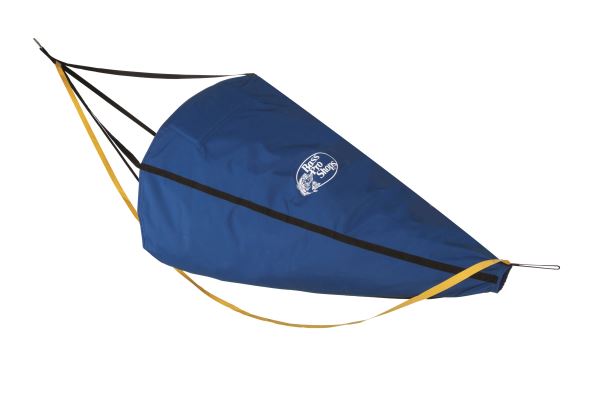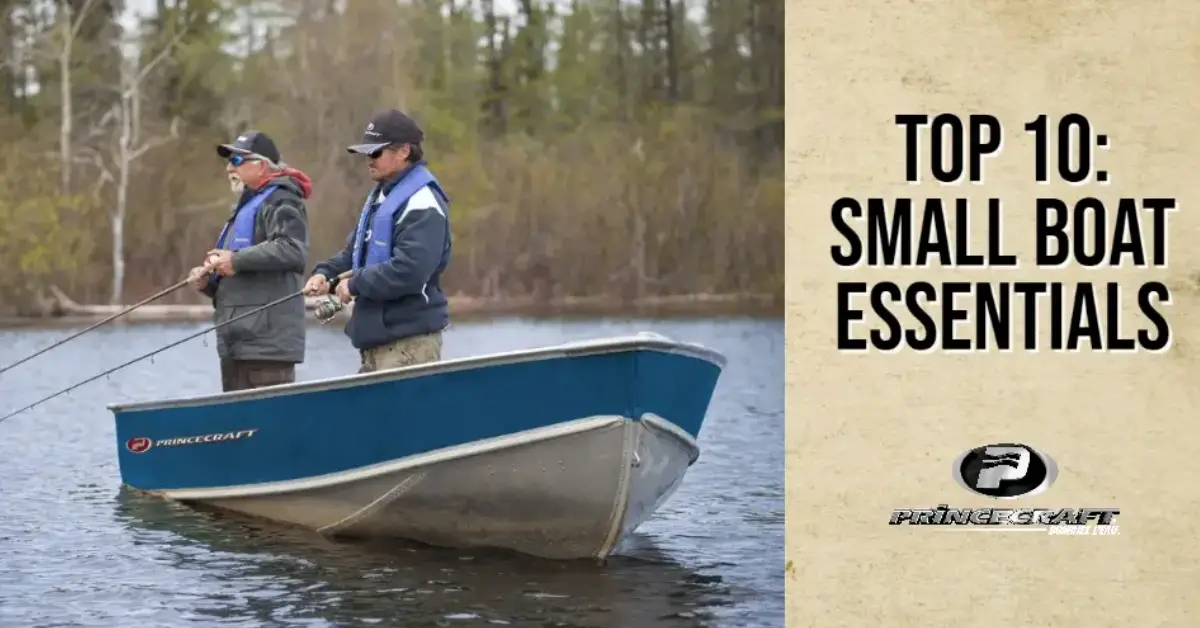Sponsored by Princecraft
Let’s face it, in this modern fishing era, with all the glitz and glamour of equipment, owning that tricked-out, fully loaded 20+ foot fishing machine like a Princecraft Xpedition 200 is certainly on a lot of angler’s “desired” lists. But, we all know that is not possible for everyone. The reality is, great anglers have landed phenomenal catches in the smallest of boats available.
The key to success is having the right gear to begin with… then, all that’s left is to “catch-em”.
What We Recommend:
Fishfinder/GPS
A combination Chartplotter is the number one item we recommend. It doesn’t matter if it’s a permanently mounted unit or a portable, just having one is the key (if you are an ice angler then a portable is the way to go as you can double up the usage).
From finding fish to mapping an uncharted lake to scanning out to the sides for hidden structures to marking a waypoint – a sonar/GPS is just as critical an element in a smaller boat as it is in a larger boat.
We highly recommend using the suction cup transducer mounting kit option if you are using a portable unit. There are also transducer brackets available if that is more up your alley.
Anchor
An anchor is not only an essential all-round boat necessity but it’s a fantastic tool for fishing. If your small boat does not have an electric motor on it and you need to sit in one particular spot, then anchoring is the deal. So many times have we been up in the north country and had to sit on a particular Walleye structure (like an underwater hump) and literally bounce a jig and minnow directly in front of a Walleye’s face. Without the anchor, we’d have been toast!
Make sure you have an anchor with lots of line and use it for fishing. The general rule of thumb is to have 7-10 times the depth of the water in which you will anchor (e.g. if you are in 10 feet of water you should have 70+ feet of line). We usually use around 5 times the depth when fishing smaller lakes in northern Canada.
Drift Sock

A drift sock, or sea anchor, is something that an angler throws into the water to slow the speed of a drifting boat. Again, using Walleye as a reference, if these often finicky eaters are in an off mood, then a slow methodical drift might just be the ticket. If the wind is blowing your boat at 1.6 mph but you are having a difficult time staying in contact with the bottom, by dropping a drift sock out, you can often get that boat to under a mile an hour. That can be crucial!
Here’s a tip: If you’re in a pickle as to slowing your boat down while either trolling or while drifting AND you’re having a hard time finding a drift sock, take a 19-litre plastic bucket out with you and drag it behind your boat (or bring along two 8-litre buckets and drag them both off the back or one side of the boat). By dragging one or two buckets tied on with short ropes, it does the exact same thing as a drift sock (it just takes up a bit more room in the boat).
Rod Holders
A portable rod holder for every person in the boat is such an inexpensive and important element of a small boat setup. Trolling all day long can become fatiguing or even boring, some might say. By “sticking your sticks”
into rod holders, life can become much easier.
Make sure you buy quality here. Clamp-on holders by companies like Down East are excellent.
Ambidextrous Tiller Handle
A great feature that Mercury Marine has introduced is the ambidextrous tiller handle. If you have always struggled with sitting on the side of the motor that does not suit your needs or doesn’t feel correct, you can adjust the tiller to suit your favourite side.
During a long day of trolling around, this can be a game-changer!
Fishing Rod Protectors
A small aluminum boat has a lot of unprotected surfaces that can sometimes catch a rod tip and put a damper on a fishing outing. An easy way to protect your fishing rods is with rod gloves. By leaving only the rod you are using uncovered, the remainder of your sticks (if you use more than one) will always be ready for action when needed.
Inflatable PFD
You have heard us harping again and again, “WEAR YOUR PERSONAL FLOATATION DEVICE”.
Well nowhere is it more important than in a small watercraft. Again, as we’ve stated, the inflatable PFDs available today are so effective and comfortable that once you are used to it, you’ll never know it’s even on!
Please think about your family on this one; you need to make it home safely!
CONCLUSION
The above is a list of “some” of the fishing items we suggest you bring along in your small rig. Remember, it’s not the size of the boat that counts… it’s the size of the fish!






4 Responses
My wife and I have a 14 ft Princecraft with an 8 hp honda outboard. Along with some of the items mentioned, we keep 2 small baling buckets on board even tho I have a bilge pump. Along with the long rope on the anchor, we have a long rope incase we needed a tow. I do have a small extinguisher mounted in the back also. I have a mounted fish finder that goes to battery which is in battery box on backside of middle bench seat. Have a mounted electric compass on side of middle seat. Has light in it when I turn on bow and stern lights. Both of those go into pocket connectors so they don’t have to be mounted until needed. Have the normal size oars and a small plastic paddle. We have all the things we feel is important, but keep it neat so we can move easily in boat.
Hey Willy, sounds like you and your wife have done a great job on your Princecraft, awesome!!!
Now you got it Fish’n Canada!
Yes, that electronice thingamajig you use for locating those gill bearing underwater creatures is called a fishfinder, NOT sonar.
Good to see you finally came around to seeing the logic in my statements that Fishfinders are NOT sonar. They DO NOT porduce or otherwise popagate sound. As you know, those dohickeys, do have a way confusing the senses of most anglers.
Fire the torpedoes and depth charges!
Although it’s not needed I carry a flare gun with flares, never thought I would need them about two summers ago my motor quit on me when I was out in lake Erie, turned out to be a few problems that ended my day early, I Have a 14 ft smoker craft I was after smallies that morning whe Erie decided to change on me so I made the wise choice to head back into the Grand river whe n the motor died and would not stay running, I just happened to have a flare gun in my safety box so because I was getting blown towards the shoal and rocks I tried to paddle the ended up using the flare gun about four flares later another boat came to help me out. The couple towed me to a boat ramp
Now I make sure I have flares and the gun